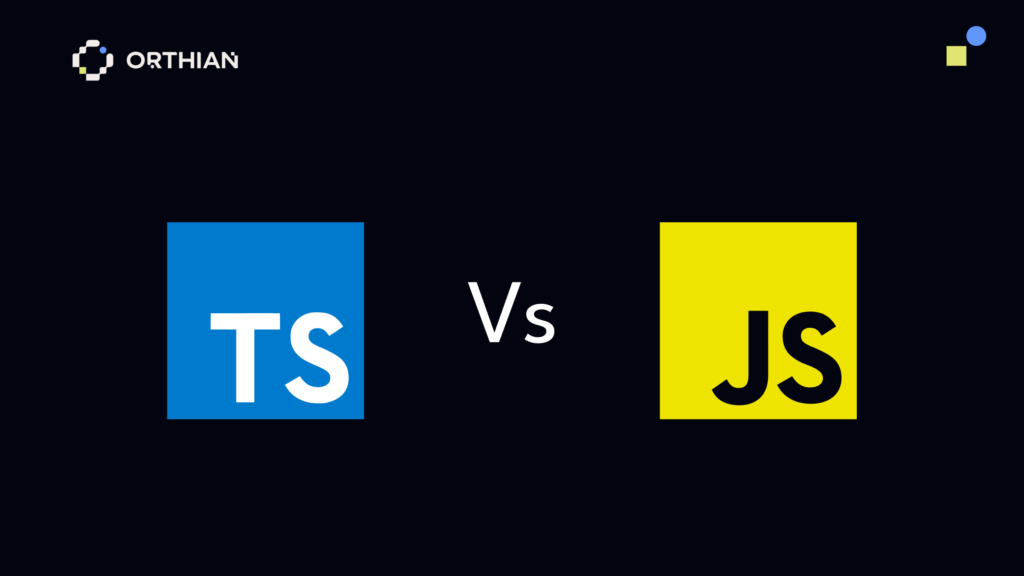Compare TypeScript and JavaScript in depth. Learn their differences, strengths (IDE support, ecosystem), and when to pick each for front-end, back-end, or cross-platform apps.
1. Evolution of JavaScript and the Rise of TypeScript
JavaScript’s ubiquity from browser scripting to server-side Node.js made it the world’s most popular language. As projects grew complex, TypeScript emerged (2012) to bring type safety and better tooling to large-scale apps. Yet JavaScript’s simplicity, modern IDE features (autocomplete, intelligent suggestions), and massive ecosystem remain compelling.
2. What Is JavaScript?
- Definition: A high-level, interpreted scripting language standardized as ECMAScript.
- Ease of Learning: Dynamic typing and forgiving syntax let newcomers start fast.
- Modern IDE Support: VS Code, WebStorm, etc., offer real-time autocomplete, linting, refactoring hints, catching many errors before runtime.
- Library & Framework Ecosystem: React, Vue, Angular, Express, and React Native (for cross-platform mobile) all run on JavaScript.
- Full-Stack & Beyond: JavaScript powers front-end UIs, Node.js back-ends, serverless functions, CLI tools, and desktop apps with Electron.
Typical use cases:
- Front-end SPA (React, Vue, Angular)
- Cross-platform apps (React Native, Ionic)
- Back-end services (Node.js, Deno)
- Automation scripts & tooling
3. What Is TypeScript?
- Definition: A statically typed superset of JavaScript that compiles to plain JS.
- Type Safety & Tooling: Interfaces, enums, and compile-time checks enhance reliability.
- IDE Experience: Even richer autocomplete and refactoring powered by type information.
- Framework Support: First-class in Angular, and fully supported in React, Vue, Next.js, and NestJS.
- Full-Stack Use: Transpiles to JavaScript for both browser and Node.js environments.
Typical use cases:
- Large-scale front-end applications
- Enterprise-level back-ends (NestJS, ts-node)
- Shared codebases across teams (monorepos)
4. TypeScript vs JavaScript: Key Differences
| Feature | JavaScript | TypeScript |
|---|---|---|
| Typing | Primarily at runtime, helped by modern IDEs | Static (compile-time) |
| Error Detection | Primarily at runtime; helped by modern IDEs | Compile-time + IDE hints |
| Library Ecosystem | Huge npm registry, immediate usage | Same ecosystem + typed definitions (DefinitelyTyped) |
| Cross-Platform | React Native, Node.js, Electron | All JS platforms, with added type safety |
| Refactoring Support | Good (IDE-based) | Excellent (type-driven) |
| Learning Curve | Low | Moderate |
| Runtime Performance | Identical TS compiles to JS, performance depends on code quality |
Insight: Modern IDEs have closed much of the gap in JS error prevention through static analysis plugins, making vanilla JavaScript surprisingly robust at scale, especially with frameworks like React Native that rely on both languages interchangeably.
5. Developer Experience: Productivity vs Precision
With JavaScript:
- Rapid prototyping: no build step in small scripts
- Flexible coding style: less ceremony
- IDE assistance: autocomplete, “fix-all” suggestions, inline documentation
- Hot reload with frameworks (Next.js, Vue CLI)
With TypeScript:
- Early error detection: fewer production bugs
- Robust refactoring: mass renames, safe API changes
- Self-documenting code via types
- Compile step required: slower iteration in very small tasks
Pro tip: Use a hybrid approach, start small modules in JS and migrate to TS as the codebase and team grow.
6. Performance: Does It Matter?
TypeScript has zero runtime overhead, it compiles down to idiomatic JavaScript. Runtime performance hinges on how well your JS is structured and optimized. Effective use of typed code often catches logic errors early, indirectly improving performance by preventing inefficient patterns.
7. When to Use Each Language
| Scenario | JavaScript | TypeScript |
|---|---|---|
| MVP / Prototype | ✅ Fast startup, no build step | 🚫 Build step adds friction |
| Small script / automation | ✅ Straightforward | 🚫 Extra setup |
| Single-page web app | ✅ Lightweight, flexible | ✅ Adds maintainability for scale |
| Cross-platform mobile (React Native) | ✅ Fully supported | ✅ Recommended for large teams |
| Enterprise back-end (Node.js) | ✅ Good for microservices | ✅ Preferred for complex domains |
| Full-stack monorepo | 🚫 Harder to enforce contracts | Small script/automation |
8. How Orthian Uses JavaScript & TypeScript
- JavaScript for:
- Quick POCs and client scripts
- Legacy integrations and plugins
- Lightweight serverless functions
- TypeScript for:
- Full-stack SaaS platforms (React + Node.js)
- Enterprise-grade dashboards and SPAs
- Fintech applications demanding strong data contracts
Our stack: TypeScript + Vite + React + tRPC + ESLint + Vitest + Node.js
IDE favorite: Visual Studio Code with TS Server and ESLint integrations
9. Conclusion: Choose the Right Tool
Both languages are here to stay. JavaScript wins on ease and ecosystem flexibility; TypeScript shines when maintainability and safety matter most. Modern IDE tooling bridges the gap, making JavaScript development more reliable than ever. Your choice should align with project scale, team size, and long-term maintenance goals.
Check out more knowledge about JavaScript below:






